286 scholarly books by Haus Publishing and 11
start with D
286 scholarly books by Haus Publishing and 11
286 scholarly books by Haus Publishing
11 start with D start with D
11 start with D start with D

Dark Side of Love
Rafik Schami and Anthea Bell
Haus Publishing, 2011
A dead man hangs from the portal of St Paul Chapel in Damascus. He was a Muslim officer and he was murdered. But when Detective Barudi sets out to interrogate the man’s mysterious widow, the Secret Service takes the case away from him. Barudi continues to investigate clandestinely and discovers the murderer’s motive: it is a blood feud between the Mushtak and Shahin clans, reaching back to the beginnings of the 20th century. And, linked to it, a love story that can have no happy ending, for reconciliation has no place within the old tribal structures. Rafik Schami dazzling novel spans a century of Syrian history in which politics and religions continue to torment an entire people. Simultaneously, his poetic stories from three generations tell of the courage of lovers who risk death sooner than deny their passions. He has also written a heartfelt tribute to his hometown Damascus and a great and moving hymn to the power of love.
[more]
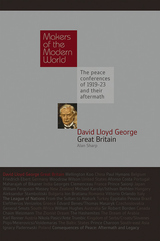
David Lloyd George
Great Britain
Alan Sharp
Haus Publishing, 2010
David Lloyd George (1863-1945). The end of the First World War saw Britain at the height of its power. Its fleet and air force were the largest in the world. Its armies had triumphed in the Middle East and spearheaded the final attacks in Western Europe that had driven the defeated Germans to seek an armistice. Britain now had to translate this military victory into the achievement of its war aims and future security and prosperity. Its main negotiator at the forthcoming peace conference would be its prime minister, the ebullient and enigmatic David Lloyd George, the "Welsh Wizard" and "the man who had won the war." Lloyd George's energy had maintained the war effort through the dark days of 1917 and early 1918, but now he anticipated, with relish, the prospect of winning the peace. Few were better equipped. He was a skilled and accomplished negotiator with the knack of reconciling the apparently irreconcilable. His admirers, of whom there were many, pointed to his brilliant and agile mind, his rapid grasp of complex questions and his powers of persuasion. His critics, who were also numerous, distrusted his sleight of hand, fleetness of foot and, frankly, his word. His six months in Paris in 1919, as he pitted his wits against formidable world leaders like Woodrow Wilson and Georges Clemenceau, were among the most enjoyable but exhausting of his life. This study investigates the extent to which Lloyd George succeeded in his aims and evaluates the immediate and longer-term results of his negotiations for Britain.
[more]
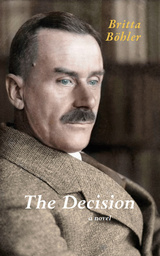
The Decision
Britta Böhler
Haus Publishing, 2015
This intriguing novel follows German author Thomas Mann during three crucial days in 1936. Away in Switzerland and fearing arrest by the Nazis upon his return to Germany, Mann must choose whether to travel back to Munich. He decides to release an open letter to the regime in a Swiss newspaper but is then tortured by doubt: his Jewish publisher in Germany will be furious with the unwelcome attention Mann’s letter is sure to bring, and by choosing exile, isn’t the writer abandoning his loyal readers back home? Will the Nazis burn his books? Will they confiscate his diaries, which include intimate, homoerotic confessions?
Britta Böhler shows us one of the twentieth century’s greatest writers as a family man, a father, a writer, and a man with moral doubts. We see a human soul trapped in a historical setting that forces him to make a seemingly impossible choice. A convincing depiction of a dilemma addressed only sparsely in Mann’s own writings, The Decision eloquently explores the all-too-human price of confronting totalitarianism.
Britta Böhler shows us one of the twentieth century’s greatest writers as a family man, a father, a writer, and a man with moral doubts. We see a human soul trapped in a historical setting that forces him to make a seemingly impossible choice. A convincing depiction of a dilemma addressed only sparsely in Mann’s own writings, The Decision eloquently explores the all-too-human price of confronting totalitarianism.
[more]
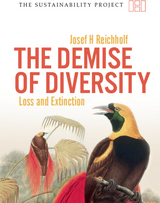
The Demise of Diversity
Loss and Extinction
Josef Reichholf
Haus Publishing, 2009
Maintaining the natural diversity of the countless species on Earth is of fundamental importance for the continued existence of life on this planet. Nevertheless, ecosystems are being destroyed, as the cultivation of land for agriculture, industry and housing is intensified and oceans continue to be exploited. The Demise of Diversity: Loss and Extinction deals with biodiversity on this planet and the vital importance of sustaining it—nothing less than the future of life on Earth.
[more]

The Dervish Bowl
The Many Lives of Arminius Vámbéry
Anabel Loyd
Haus Publishing, 2024
A narrative of the life of Arminius Vámbéry.
Who was Arminius Vámbéry? A poverty-stricken, Jewish autodidact; a linguist, traveler, and writer—or a sometime Zionist, inspiration for Dracula’s nemesis, and British secret agent? Vámbéry wrote his own story many times over, and it was these often highly embroidered accounts of journeys through Persia and Central Asia that saw him acclaimed in Victorian England as an intrepid explorer and daring adventurer. Against the backdrop of the “Great Game,” in which Russia and Britain jostled for territory, influence, and control of the borders and gateways to India and its wealth, Vámbéry played the roles of hero and double-dealer, of fascinated witness and imperialist charlatan.
The Dervish Bowl is the story of these competing narratives and a compelling investigation of both the ever-changing persona Vámbéry created for himself and the man who emerges from his private correspondence and the accounts of both his friends and his enemies, many of whom were themselves major players in the geopolitical adventures of the volatile nineteenth century—a time when Britain’s ambitions for her empire were at their height, yet nothing and no one was quite as they seemed.
Who was Arminius Vámbéry? A poverty-stricken, Jewish autodidact; a linguist, traveler, and writer—or a sometime Zionist, inspiration for Dracula’s nemesis, and British secret agent? Vámbéry wrote his own story many times over, and it was these often highly embroidered accounts of journeys through Persia and Central Asia that saw him acclaimed in Victorian England as an intrepid explorer and daring adventurer. Against the backdrop of the “Great Game,” in which Russia and Britain jostled for territory, influence, and control of the borders and gateways to India and its wealth, Vámbéry played the roles of hero and double-dealer, of fascinated witness and imperialist charlatan.
The Dervish Bowl is the story of these competing narratives and a compelling investigation of both the ever-changing persona Vámbéry created for himself and the man who emerges from his private correspondence and the accounts of both his friends and his enemies, many of whom were themselves major players in the geopolitical adventures of the volatile nineteenth century—a time when Britain’s ambitions for her empire were at their height, yet nothing and no one was quite as they seemed.
[more]
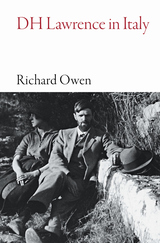
DH Lawrence in Italy
Richard Owen
Haus Publishing, 2014
November 1925: In search of health and sun, the writer D. H. Lawrence arrives on the Italian Riviera with his wife, Frieda, and is exhilarated by the view of the sparkling Mediterranean from his rented villa, set amid olives and vines. But over the next six months, Frieda will be fatally attracted to their landlord, a dashing Italian army officer. This incident of infidelity influenced Lawrence to write two short stories, “Sun” and “The Virgin and the Gypsy,” in which women are drawn to earthy, muscular men, both of which prefigured his scandalous novel Lady Chatterley’s Lover.
In DH Lawrence in Italy, Owen reconstructs the drama leading up to the creation of one of the most controversial novels of all time by drawing on the unpublished letters and diaries of Rina Secker, the Anglo-Italian wife of Lawrence’s publisher. In addition to telling the story of the origins of Lady Chatterley, DH Lawrence in Italy explores Lawrence’s passion for all things Italian, tracking his path to the Riviera from Lake Garda to Lerici, Abruzzo, Capri, Sicily, and Sardinia.
In DH Lawrence in Italy, Owen reconstructs the drama leading up to the creation of one of the most controversial novels of all time by drawing on the unpublished letters and diaries of Rina Secker, the Anglo-Italian wife of Lawrence’s publisher. In addition to telling the story of the origins of Lady Chatterley, DH Lawrence in Italy explores Lawrence’s passion for all things Italian, tracking his path to the Riviera from Lake Garda to Lerici, Abruzzo, Capri, Sicily, and Sardinia.
[more]

Dickens's London
Peter Clark
Haus Publishing, 2012
Marking the 150th anniversary of Charles Dickens’s death, Dickens’s London leads us in the footsteps of the author through this beloved city. Few novelists have written so intimately about a place as Dickens wrote about London, and, from a young age, his near-photographic memory rendered his experiences there both significant and in constant focus. Virginia Woolf maintained that “we remodel our psychological geography when we read Dickens,” as he produces “characters who exist not in detail, not accurately or exactly, but abundantly in a cluster of wild yet extraordinarily revealing remarks.” The most enduring “character” Dickens was drawn back to throughout his novels was London itself, in all its aspects, from the coaching inns of his early years to the taverns and watermen of the Thames. These were the constant cityscapes of his life and work.
In five walks through central London, Peter Clark explores “The First Suburbs”—Camden Town, Chelsea, Greenwich, Hampstead, Highgate and Limehouse—as they feature in Dickens’s writing and illuminates the settings of Dickens’s life and his greatest works of journalism and fiction. Describing these storied spaces of today’s central London in intimate detail, Clark invites us to experience the city as it was known to Dickens and his characters. These walks take us through the locations and buildings that he interacted with and wrote about, creating an imaginative reconstruction of the Dickensian world that has been lost to time.
In five walks through central London, Peter Clark explores “The First Suburbs”—Camden Town, Chelsea, Greenwich, Hampstead, Highgate and Limehouse—as they feature in Dickens’s writing and illuminates the settings of Dickens’s life and his greatest works of journalism and fiction. Describing these storied spaces of today’s central London in intimate detail, Clark invites us to experience the city as it was known to Dickens and his characters. These walks take us through the locations and buildings that he interacted with and wrote about, creating an imaginative reconstruction of the Dickensian world that has been lost to time.
[more]
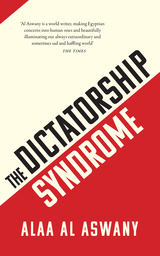
The Dictatorship Syndrome
Alaa Al Aswany
Haus Publishing, 2019
The study of dictatorship in the West has acquired an almost exotic dimension. But authoritarian regimes remain a painful reality for billions of people worldwide who still live under them, their freedoms violated and their rights abused. They are subject to arbitrary arrest, torture, corruption, ignorance, and injustice. What is the nature of dictatorship? How does it take hold? In what conditions and circumstances is it permitted to thrive? And how do dictators retain power, even when reviled and mocked by those they govern? In this deeply considered and at times provocative short work, Alaa Al Aswany tells us that, as with any disease, to understand the syndrome of dictatorship we must first consider the circumstances of its emergence, along with the symptoms and complications it causes in both the people and the dictator.
[more]

The Division of the World
On Archives, Empires and the Vanity of Borders
Martin Zimmermann and Ursula Schulz-Dornburg
Haus Publishing, 2021
A photographer and a historian explore a vast archive of Spanish colonial history.
At a time when Western nations are being urged to confront their colonial past, this book examines a major archive, revealing the scale of the Spanish colonial enterprise in South and Central America.
Established in 1785, the Archivo General de Indias in Seville holds roughly three hundred years of Spanish colonial history in the Americas. It houses 8,000 charts and around ninety million documents—among them Christopher Columbus’s logbook and the famous Treaty of Tordesillas which, mediated by the Pope and signed in 1494, entitled the Spanish and Portuguese kings to divide the world between them. With this treaty as a starting point, the historian Martin Zimmermann journeys into the age of discovery and recounts stories of dangerous passages, encounters with the unknown, colonial brutality, and the power of cartographers, illustrating the insatiable lust of colonialists to conquer, exploit, and own the world. Ursula Schulz-Dornburg’s photographs show the archive before its redevelopment in 2002, offering a unique view into one of Europe’s most significant archives.
At a time when Western nations are being urged to confront their colonial past, this book examines a major archive, revealing the scale of the Spanish colonial enterprise in South and Central America.
Established in 1785, the Archivo General de Indias in Seville holds roughly three hundred years of Spanish colonial history in the Americas. It houses 8,000 charts and around ninety million documents—among them Christopher Columbus’s logbook and the famous Treaty of Tordesillas which, mediated by the Pope and signed in 1494, entitled the Spanish and Portuguese kings to divide the world between them. With this treaty as a starting point, the historian Martin Zimmermann journeys into the age of discovery and recounts stories of dangerous passages, encounters with the unknown, colonial brutality, and the power of cartographers, illustrating the insatiable lust of colonialists to conquer, exploit, and own the world. Ursula Schulz-Dornburg’s photographs show the archive before its redevelopment in 2002, offering a unique view into one of Europe’s most significant archives.
[more]

Douglas Home
David Dutton
Haus Publishing, 2006
Alec Douglas-Home was an aristocrat who disclaimed his peerage to become Prime Minister in 1963.
[more]

Drawing the Line
The Irish Border in British Politics
Ivan Gibbons
Haus Publishing, 2017
Though once a source of violent conflict, the border dividing the Republic of Ireland from Northern Ireland has been relatively stable in recent years. The border’s creation in 1921 exacerbated hostile relations between Ireland and Britain in the subsequent decades, hostility that frequently broke out into violent conflict until the breakthrough Good Friday Agreement of 1998. That landmark policy declared that there will be no change in the status of the border unless there is a majority decision in Northern Ireland in favor, and the relaxation in tensions it brought has been hailed as one of the great breakthroughs for peace in our era. Now, however, as the UK prepares to leave the European Union in 2019, the Irish border is once again a hot-button issue and pivotal to any settlement reached. To enable a fuller understanding of this open question, Drawing the Line provides a concise explanation of the current controversy by sketching it in its full historical context.
[more]
READERS
Browse our collection.
PUBLISHERS
See BiblioVault's publisher services.
STUDENT SERVICES
Files for college accessibility offices.
UChicago Accessibility Resources
home | accessibility | search | about | contact us
BiblioVault ® 2001 - 2024
The University of Chicago Press









